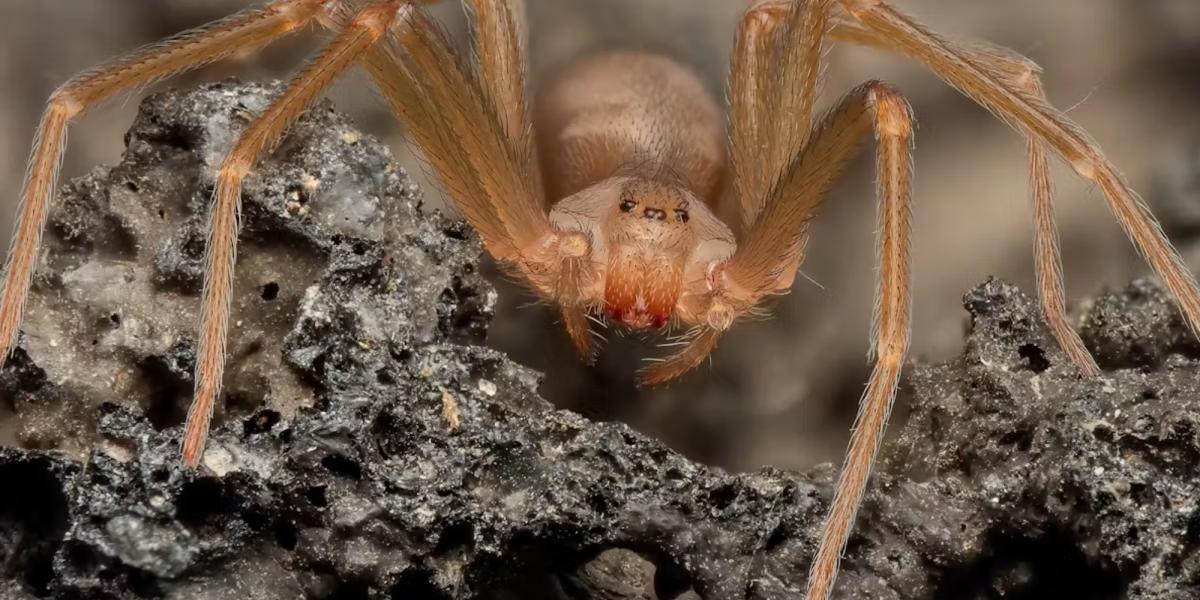If someone asked you to point out a place with poisonous wildlife, which would come to mind first? Perhaps Australia, with its infamous snakes, such as the inland taipan (Oxyuranus microlepidotus). Or, perhaps, Brazil, where feared creatures like the yellow scorpion roam freely (Tityus serrulatus). Much less likely is that he was thinking of a region of Europe. And the old continent is not characterized by having a particularly threatening fauna.
However, in recent years fear of a small eight-legged creature has increased in southern Europe, especially when cases of deaths attributed to this arthropod are published. The last acquaintance occurred this summer in the Italian town of Bari, where A 23-year-old man died from a suspected violin spider bitealso known as the brown recluse or corner spider. Just a month before, a 52-year-old police officer from Palermo died from the same cause.
The two spiders with the worst fame in Spain
If you were very unlucky and were putting your hands in inadvisable places, a walk through Spanish nature could bring you a painful bite from one of the largest arachnids in the national fauna, such as the cork oak spider (Macrothele calpeiana) or the wolf spider (Lycosa tarantula). However, in the Mediterranean region there are only two species of spider whose bite is considered clinically relevant: the European black widow (Latrodectus tredecimguttatus) and the Mediterranean violinist (Loxosceles rufescens).
The worst reputation has always fallen on the black widow, but there are no documented cases of deaths caused by the bite of its European variant. Furthermore, encounters with this striking animal are rare, since its distribution is rather rural and it builds irregular spider webs under the bark of trees or rocks. The neurotoxic effects of its venom for humans are mostly known: a complex cocktail of molecules, collectively called latrotoxinsaffect nerve transmission, the functioning of the heart muscle and smooth muscles, causing a syndrome called latrodectism.
The fiddler spider, so called because it usually has a small dark violin-shaped spot on its cephalothorax, is a different matter. Although it is also possible to find it in the countryside, currently it could be considered practically a synanthropic species. This means that it has a tendency to live in close proximity to humans, being common inside homes, garages or workplaces. There, it shows a preference for dark, dusty hiding places, such as behind or under large furniture, where it can spend long periods of time unnoticed.
Violinist spider.
A different poison
Unlike what happens with the neurotoxic venom of black widows, that of spiders from the sicaridae family, to which the violinist belongs, has a necrotic action (death of body tissue). Among the many proteins found in its venom are phospholipase enzymes, which degrade cell membranes and rupture blood vessels. Both effects combined usually cause a local condition in the area of the bite that involves swelling, redness and itching for a few weeks.
In a small percentage of cases, the central area of the bite can develop a necrotic lesion, where the tissue dies and ends up falling off, healing after a few weeks.
In general, this set of symptoms is called cutaneous loxocelism and, unless the bite occurs in particularly sensitive areas of the body, such as the face, it does not usually have major consequences. Furthermore, necrotic evolution is less common with the European fiddler spider than with some of its American congeners (L. recluse and L. laeta), which are considered a relevant public health problem in countries such as Chile, Argentina or Peru.
In rare cases, the necrosis produced by the violin spider bite can reach the underlying muscle and generate a systemic toxic syndrome, which includes symptoms such as fever or muscle and joint pain. In these cases we speak of a cutaneous loxoscelism-visceral which, very exceptionally, can lead to acute hemolysis (destruction of blood cells), kidney failure, shock and, eventually, death.
The Loxosceles in Spain
L. rufescensis a species typical of the Mediterranean region and has been living with us for thousands of years. But its bite is very rare and official and reliable data on bite cases is very scarce. Even on those occasions in which a more serious clinical course occurs, the patient rarely catches, or even detects, the animal that bit him, so most of the time the diagnosis of loxoscelism cannot be confirmed.
This is also pointed out by multidisciplinary researchers coordinated by a group from the University of the Balearic Islands in a article in which they analyze four recent cases of alleged bites, and another twelve documented in Spain between 2005 and 2021.
To date, no human death has been officially attributed to the bite of this arachnid in our country. Why several people have died in Italy in recent years due to a suspected violin spider attack is still a mystery. It is possible that this is just statistical curiosity or a series of mistaken clinical judgments.
It could also happen that, due to commercial globalization and the current daily routine of intercontinental movements, the Italian bites were caused by specimens of the American species of Loxocelesaccidentally introduced into Europe.
This has happened on several occasions with specimens of the much more dangerous genus. Phoneutriawhich includes the famous banana wandering spiders. These spiders have appeared on exceptional occasions in shipments imported from South America. However, there is no official record of any stable population of American violinists or of Phoneutria in Europe.
To worry or not to worry?
Arachnophobia, so widespread, is successfully fueled by horror films and books, as well as sensational publications in the non-specialized press. But the reality is very different and, at least in Europe, the threat that any species of spider may pose is almost insignificant.
In a period of 23 years, there were recorded 1,691 deaths attributed to Hymenoptera bites (wasps, hornets and bees) on the old continent, and most of us do not run away because a hard-working bee comes close to smell the jam on our toast.
The fact that deaths from alleged spider bites in a similar period can be counted on the fingers of one hand puts the reality of the situation into context.
Fiddler spiders are not very aggressive and usually attack only when they are directly disturbed. Therefore, don’t worry. If you are careful to clean under the sofa or behind the closet from time to time and put on gloves when removing the furniture, the likelihood of a bite from Loxosceles taking you to a hospital is not much different than being struck by lightning.















